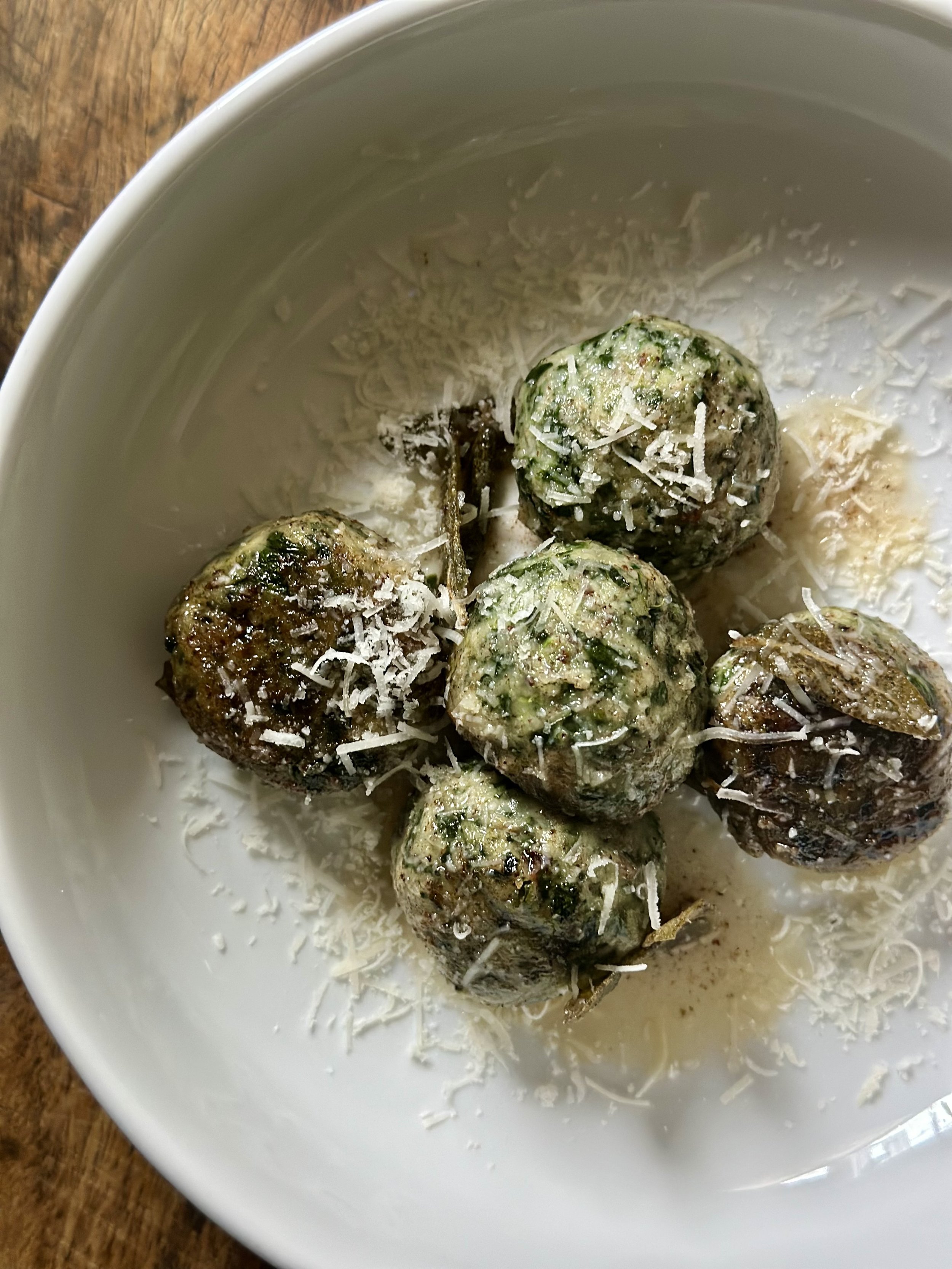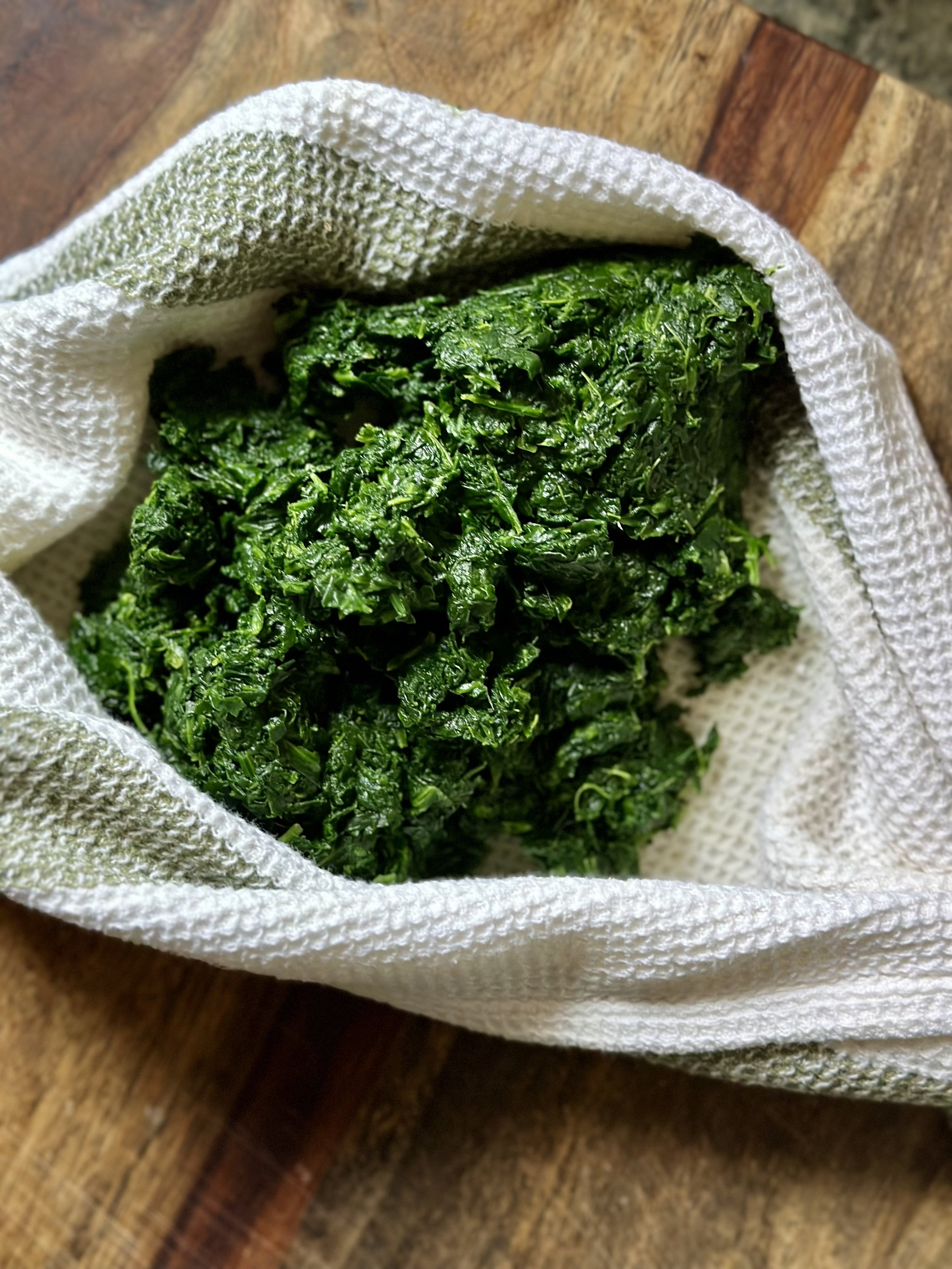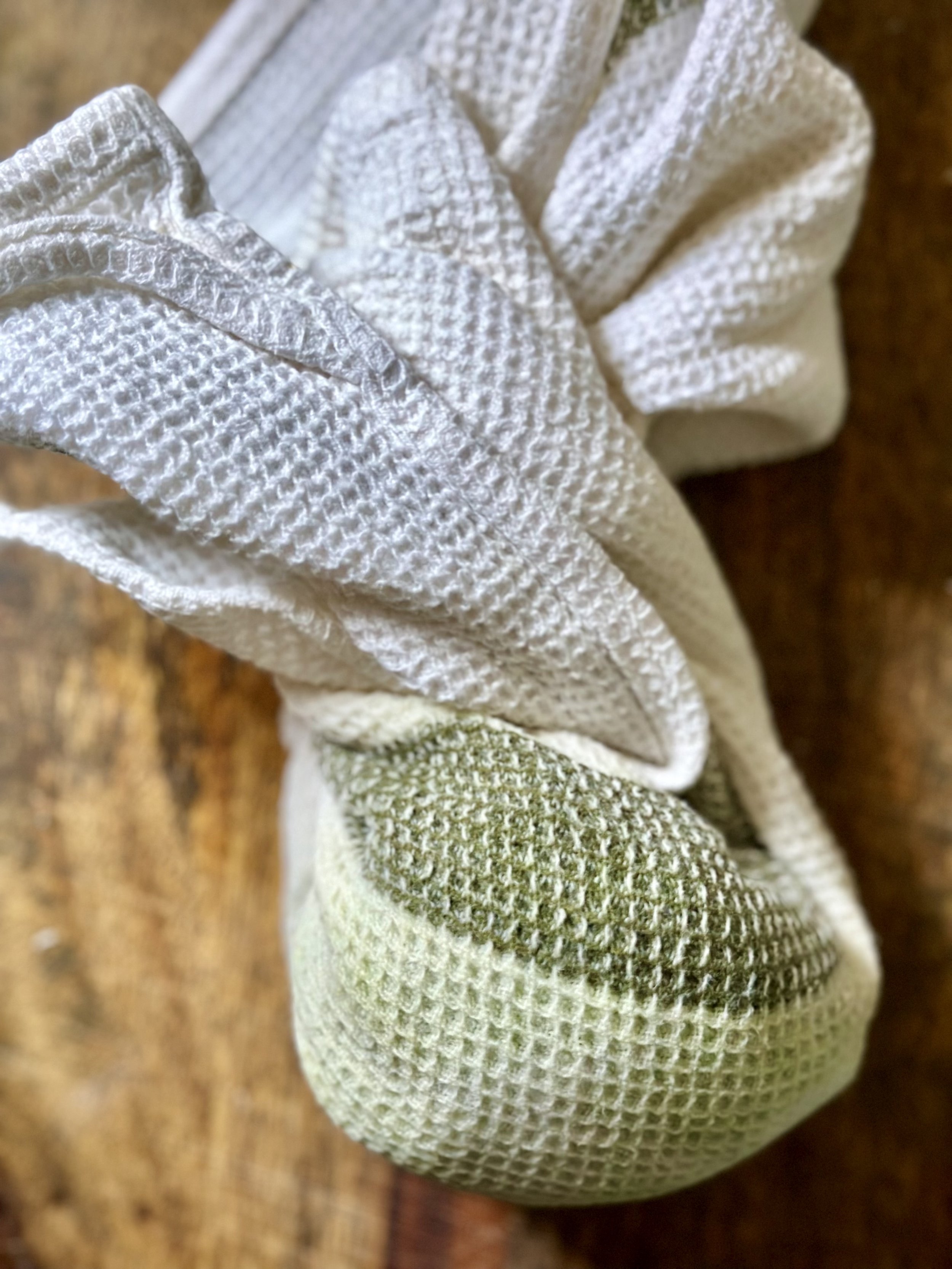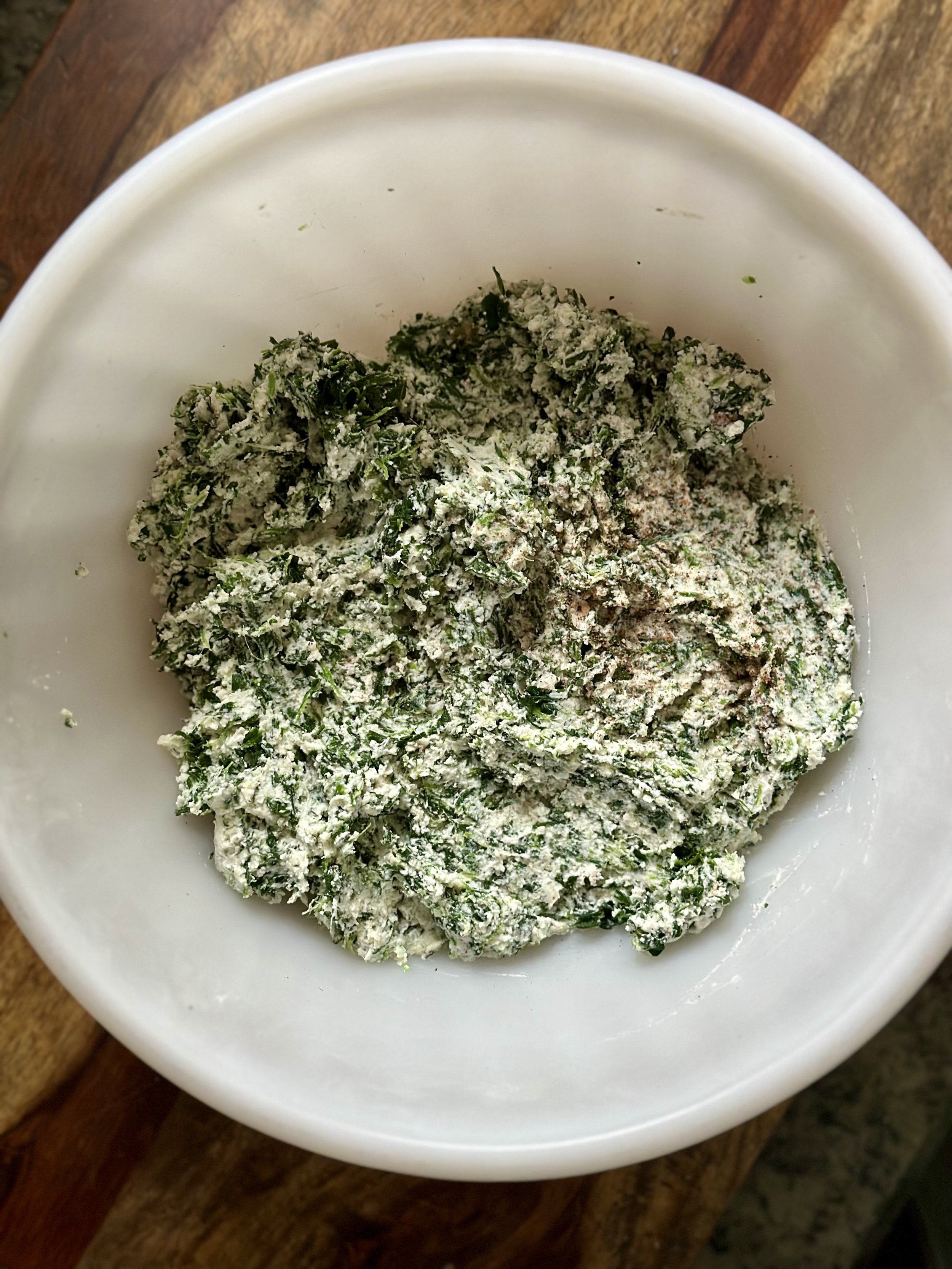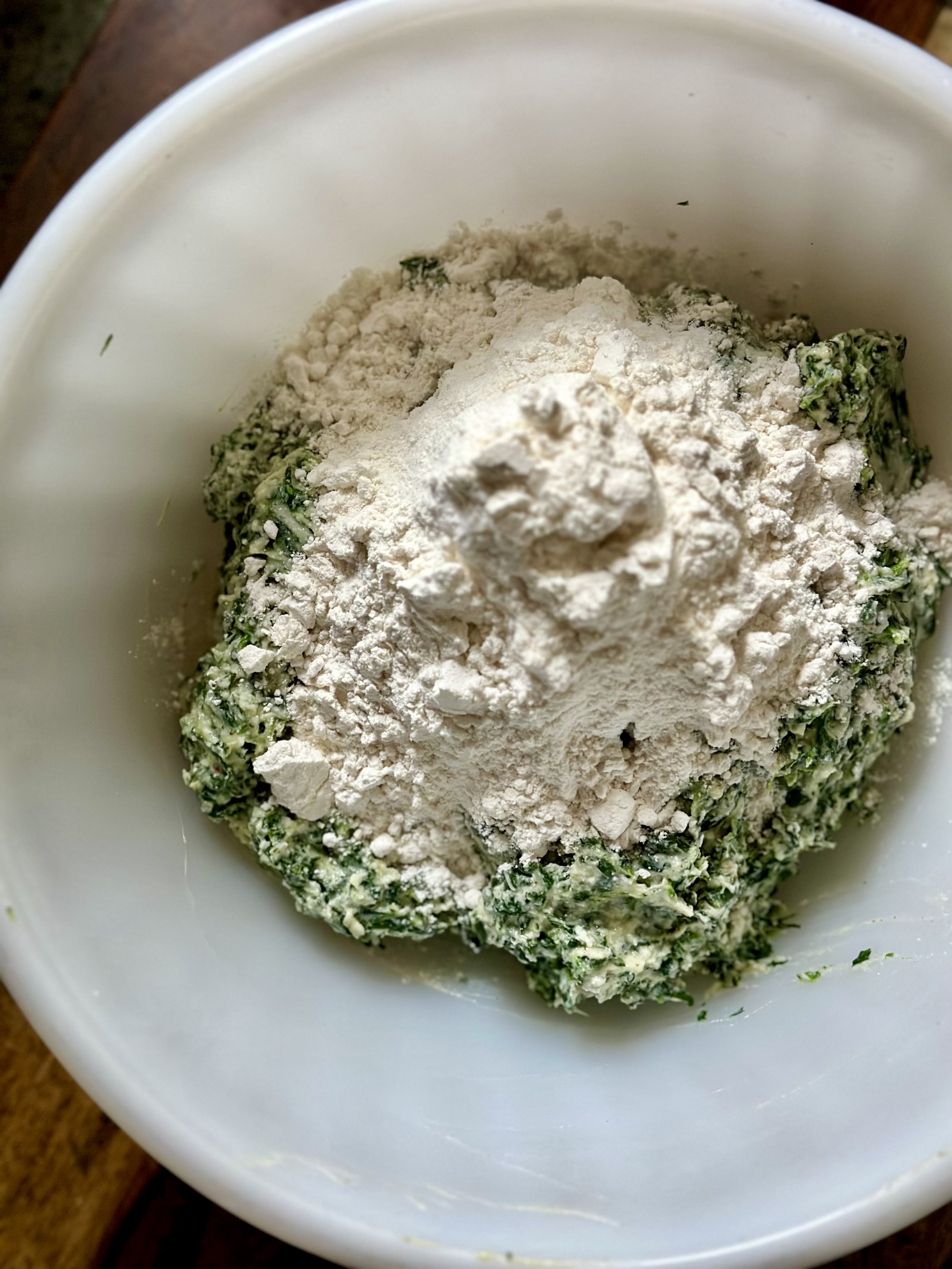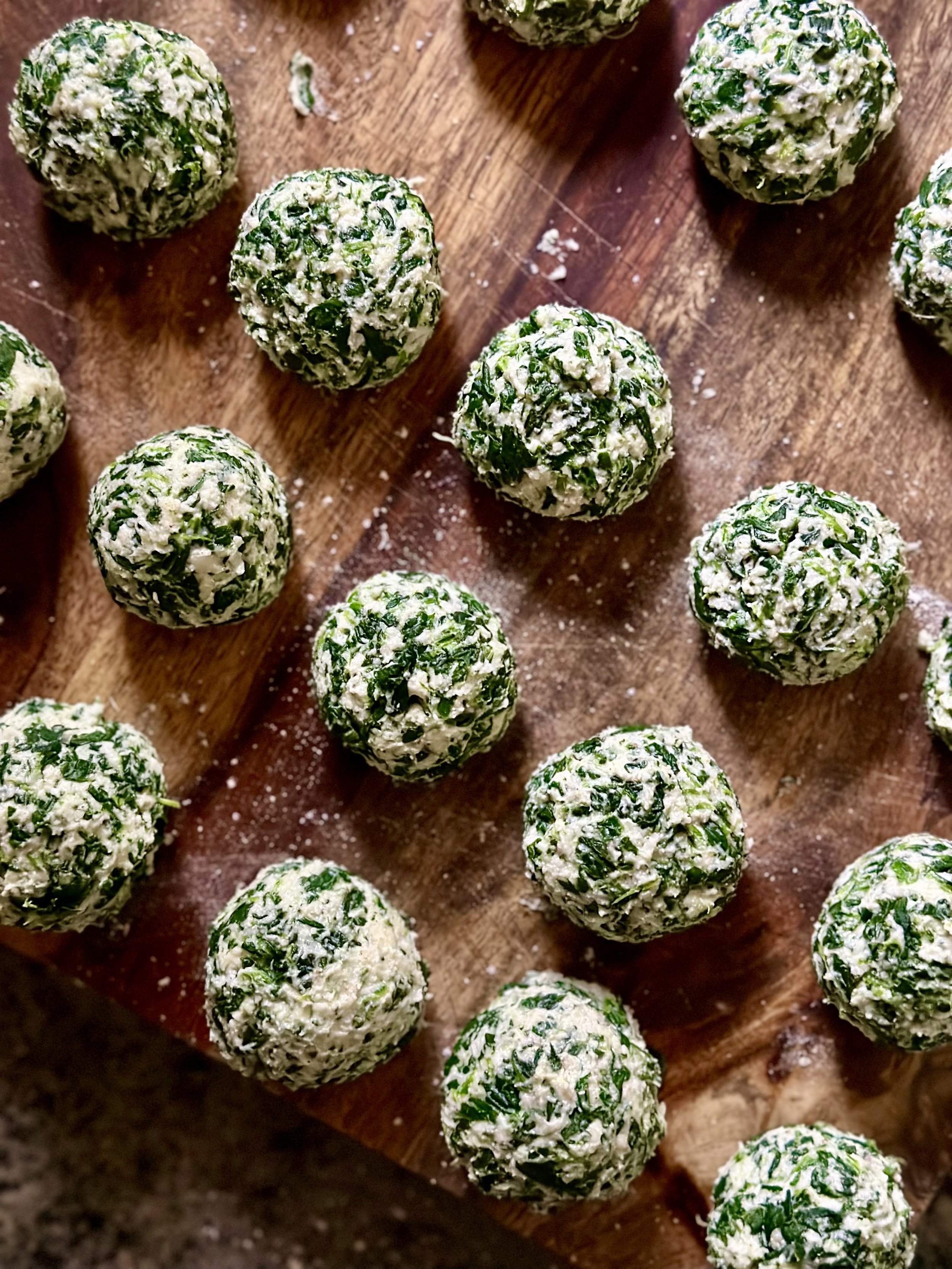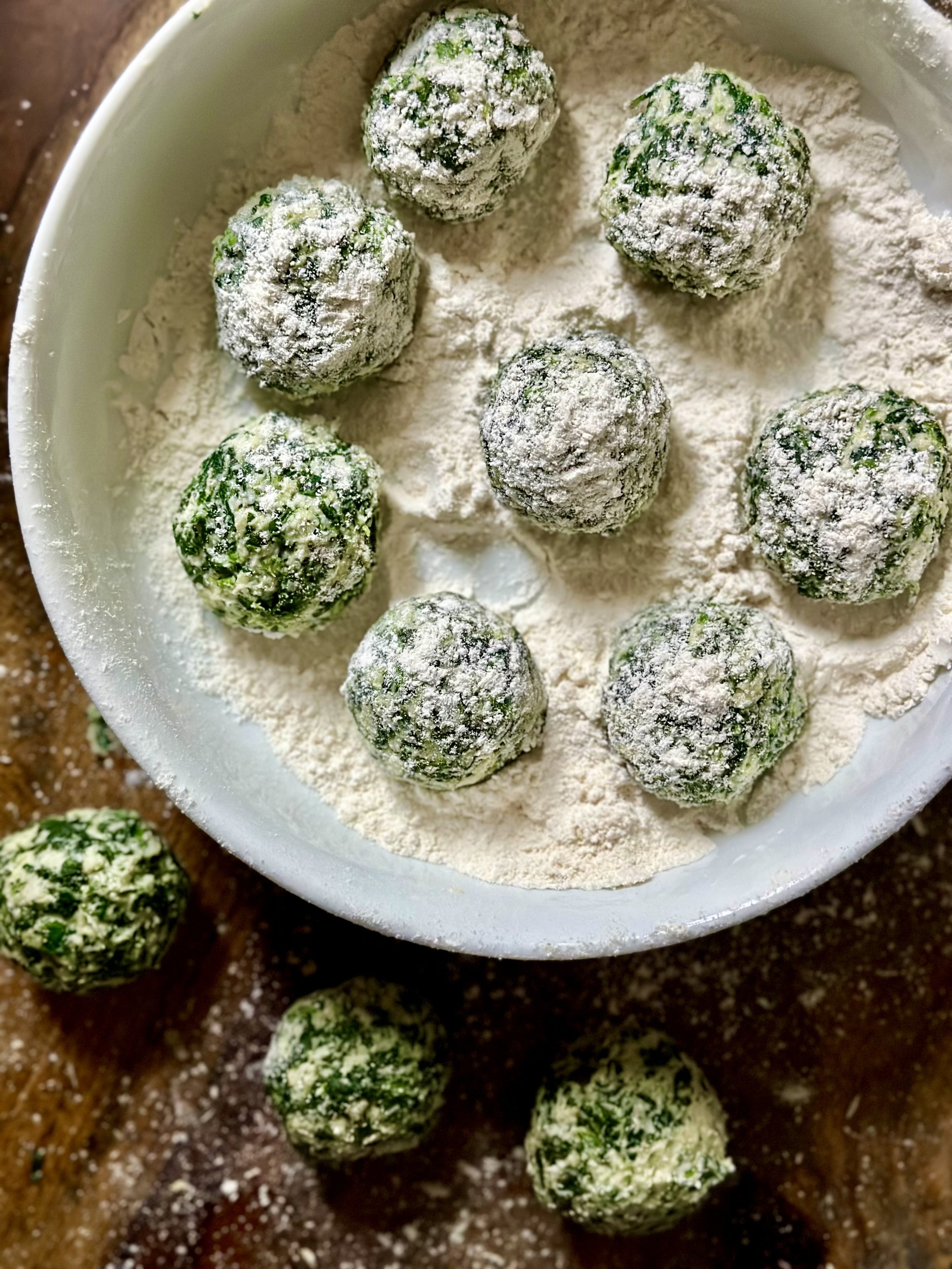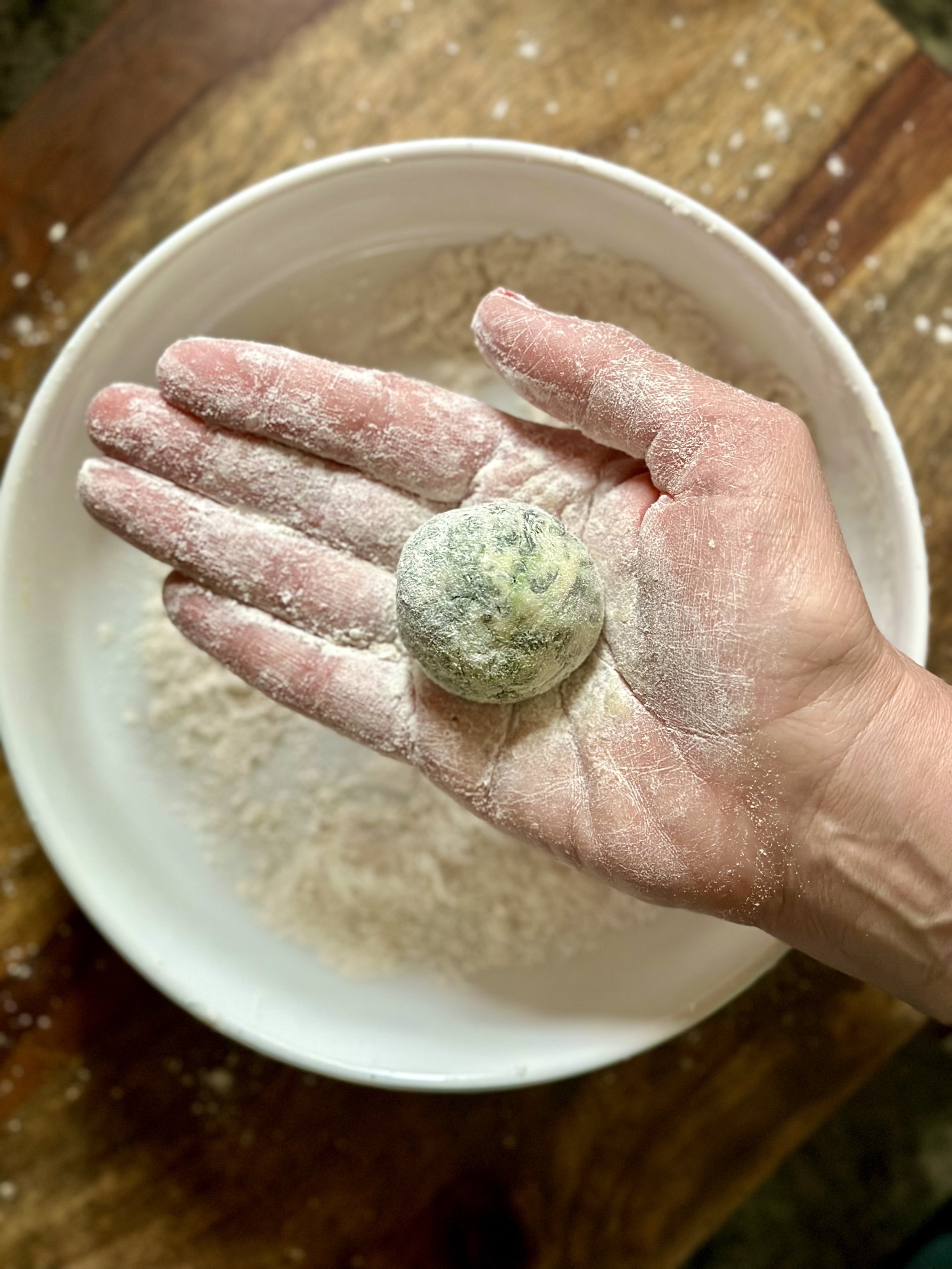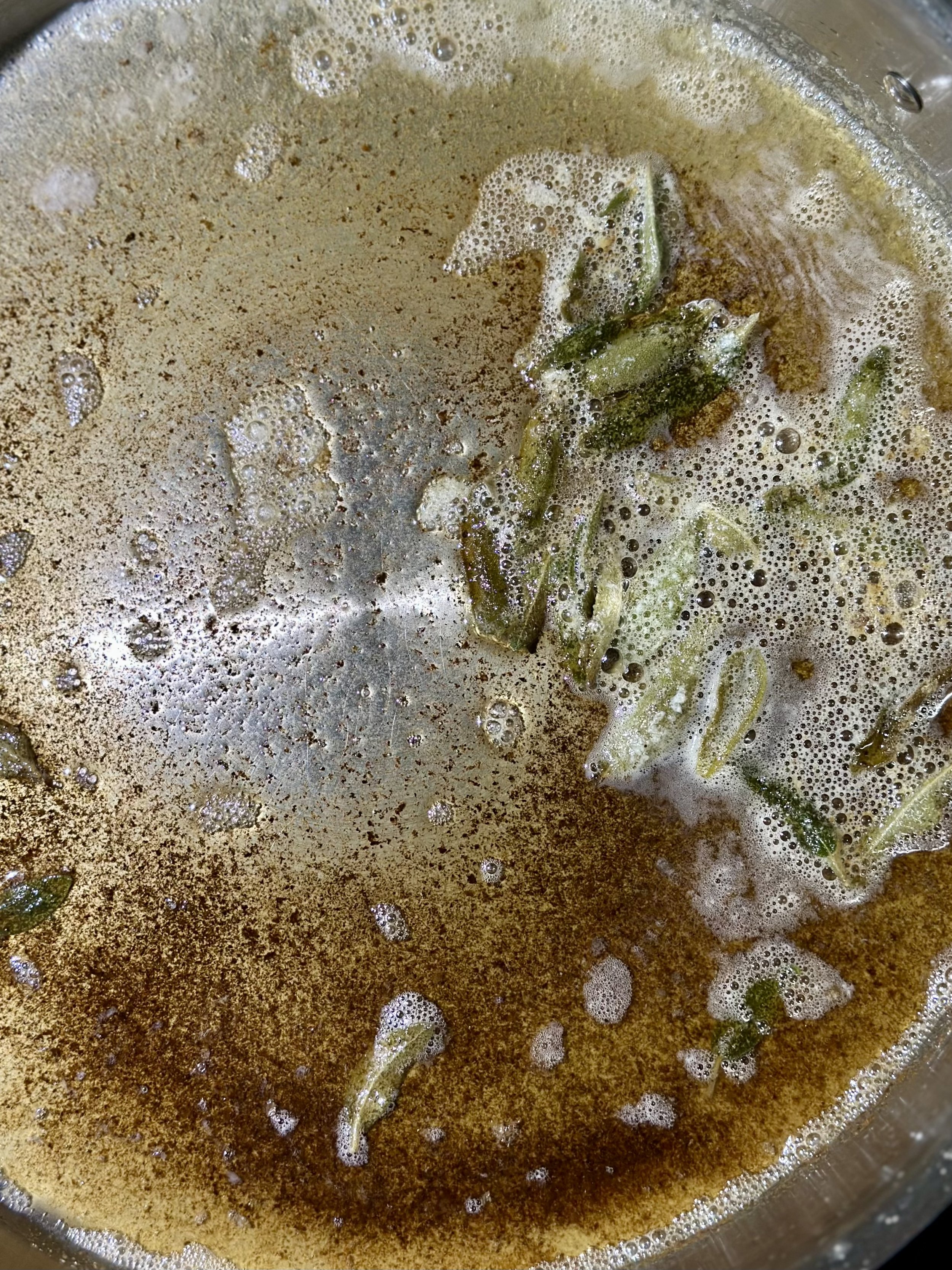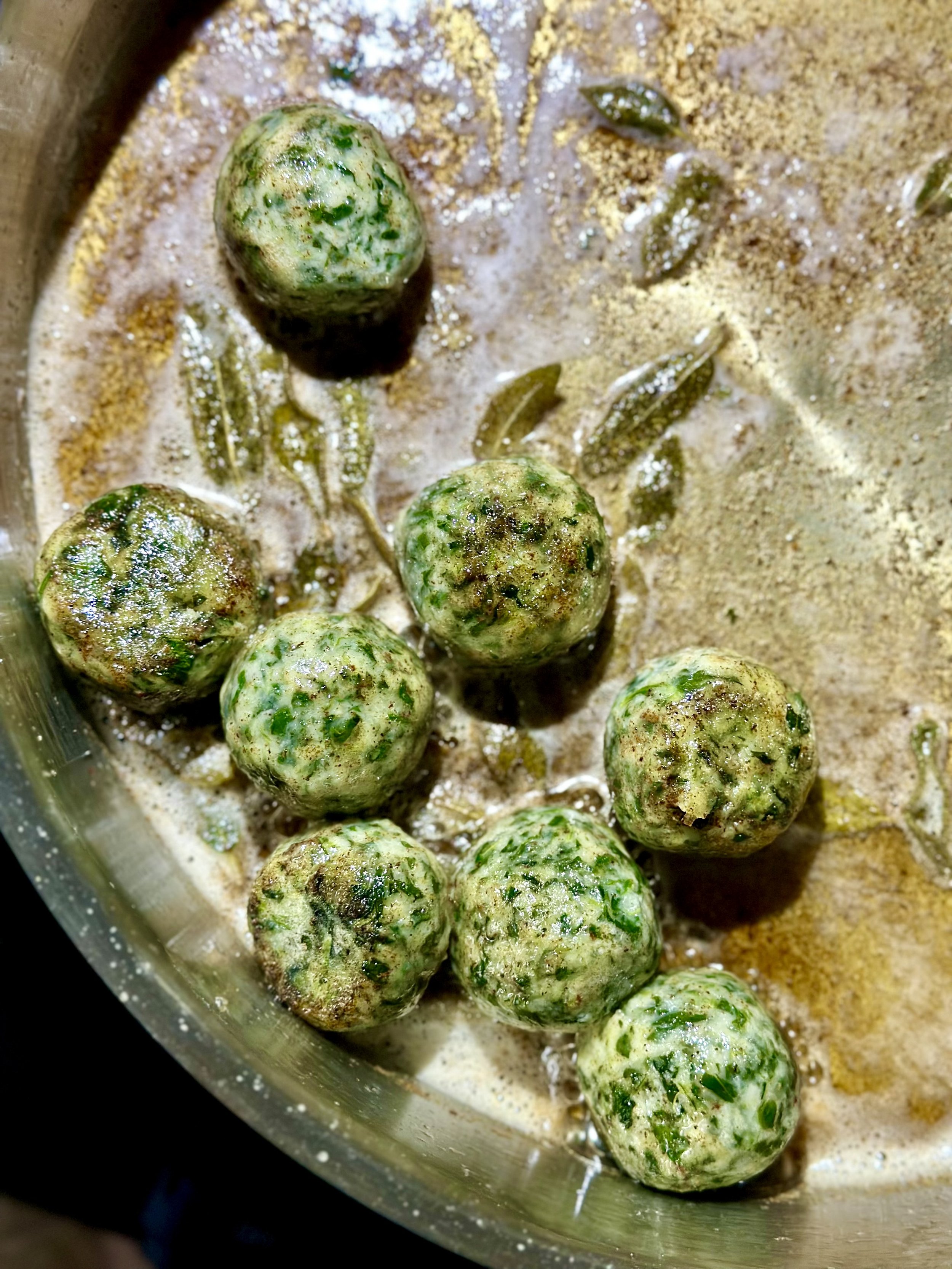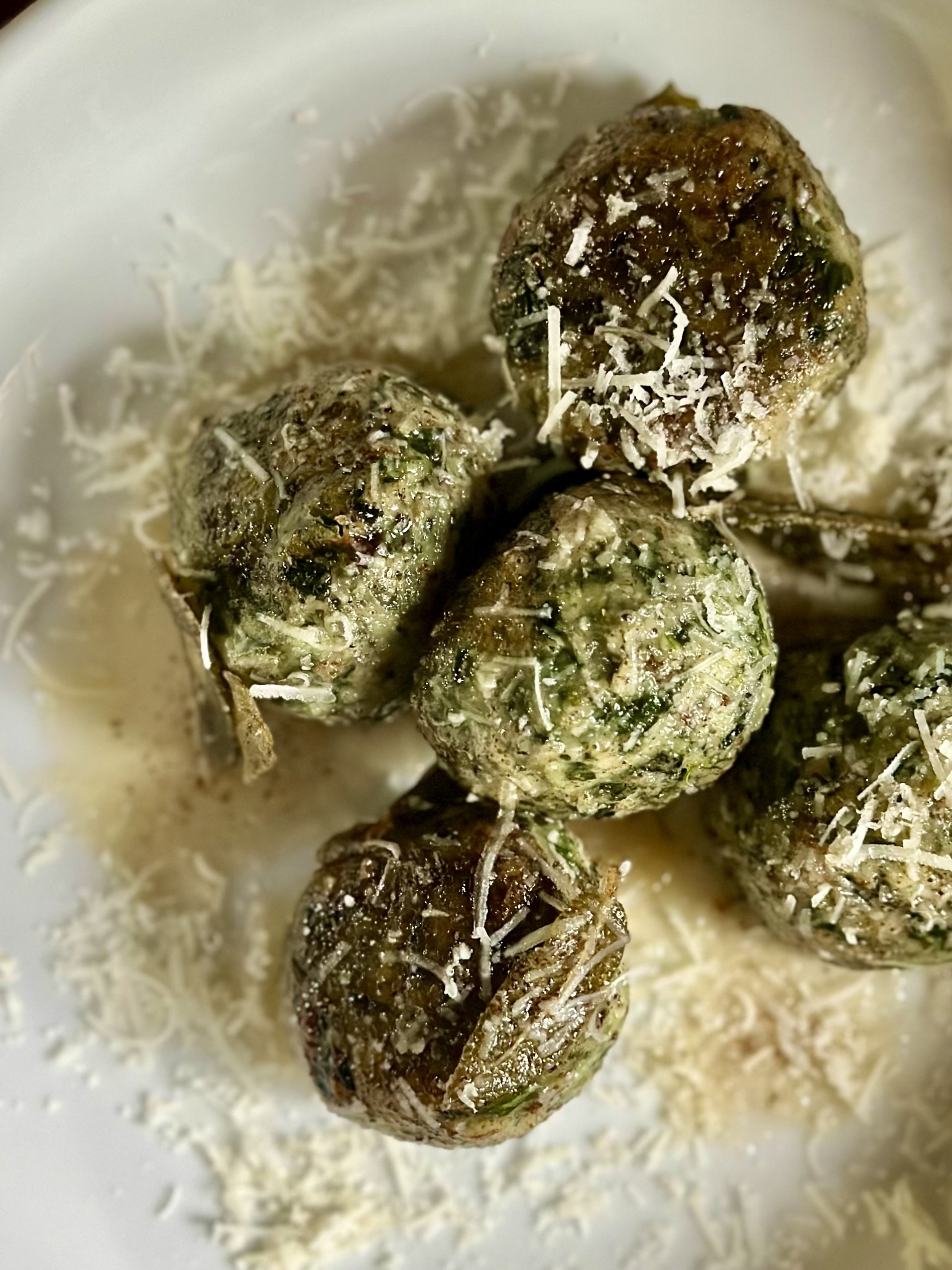Homemade Gnudi
Gnudi
*makes 20-28 dumplings
For Sunday dinner it’s typically tradition that we eat red sauce with meat and salad, sometimes pesto with ravioli or a roast. Historically, I have loved making my own pasta from scratch, think simple cavatelli or gnocchi, my two staples, but I have had a desire to try my hand at making gnudi.
Gnudi is Italian for naked. I know, sassy, right? Gnudi can be likened to a dumpling and, maybe, a 2nd cousin to gnocchi. Gnudi is a lighter and more airy Italian dumpling made from a base of ricotta and spinach, as opposed to gnocchi which is a bit heavier and uses potato and flour for its dumpling meets pasta base. Gnudi is light and billowy, soft and hearty and reminds me of ravioli or tortellini filling, maybe even stuffed shells or manicotti filling too? But without the wrappings of pasta dough. I’m sure the naked translation of this is making sense, now, perhaps.
I don’t know about you, but as a woman who would eat the ricotta filling out of calzones and scrap the dough (thank you years of the Atkins diet in my teens and twenties), making homemade gnudi was an adventure I had to go on. This “pasta” is also going viral on the internet right now, so it seemed like a ripe time to go back to my twenties and eat cheesy filling that would then be cooked and doused in butter. We’ll get to the sauce in a bit. And, you know, living with my Aunt and Uncle, meant I had two people to enjoy them with and certified recipe testers and critics.
How’d it go? A remarkable success to be honest. Not only were the gnudi fun to make, but they were simple to put together. A bit sticky for sure, but rolling joyful little balls of cheese, spinach and flour proved to be a delicious undertaking well worth their effort. We’re not talking about ravioli effort, because there is no dough or drying required, but there are other steps that take a little time and care if you want your gnudi to be worth the work.
Sunday dinner always has been a time to gather, share stories, appreciation and love. My Aunt and Uncle have been caring for me over the last 9 weeks as I’ve been recovering from rotator cuff surgery and this was one of my forays back into the kitchen this week after being on a major cooking break. More recipes to come and more enlightening thoughts about having a semi-functional arm right now.
There is something I know for sure; we can always cook our way home. Back to our own heart and into the hearts of those we love.
Now, let’s get naked. I mean gnudi. This is a food blog, after all.
To make gnudi at home you’re going to need the following:
frozen chopped spinach
whole milk ricotta
parmiggiano or pecorino romano cheese
flour
eggs
salt
pepper
nutmeg
butter
fresh sage
an old towel
paper towels
love, oodles of love
First things first, you’ll want to defrost and drain the frozen spinach of all of its water. Why? No one wants a soggy gnudi and these dumplings would not hold together if there is too much water in the dough.
I suggest letting the spinach sit out at room temperature (the day you’re making it or overnight if you’re making them in the morning) or defrosting the spinach in the microwave for 30 seconds to 1 minute. After the spinach is defrosted, get your hands on an old towel, place the spinach in the center, fold the towel around the spinach into a ball and wring out as tightly as possible.
Similarly, you’ll also want to drain any liquid from the whole milk ricotta by placing it in a mesh sieve. You can line the mesh sieve with a piece of paper towel or place directly into the sieve and rest it on a bowl so the liquid drains. Again, ricotta contains water and water is not your friend in this recipe where you want to form flavorful dumplings without adding in an abundance of flour to make the gnudi hold together. The beauty of gnudi is their softness, which you won’t get if you need to compensate with flour to absorb all of the water you didn’t remove from the two main ingredients. Allow the ricotta to sit anywhere from 20 to 40 minutes, pat dry with a paper towel, remove from the sieve, and place in a large mixing bowl with the dried out spinach.
Now comes the fun part, forming the “dough.” Add 1 1/4 cup of mixed parmigiano reggiano and pecorino romano AKA Locatelli to the bowl (you can also use one or the other, I like the sharp mix and flavor of the two), along with all of the spices - salt, freshly ground black pepper, garlic powder, nutmeg - and mix. Taste the dough now to make sure you’ve nailed the flavor, adjusting spices as you see fit. At this point I usually “over spice” because eggs and flour will be added, so you always want to be sure to salt and spice with that in mind. If the flavor is strong for you here, that’s a good thing.
Once the eggs and flour have been added, mix to combine until a semi-sticky dough is formed. Notice the residue on my hand in the photo above, after I rolled the first gnudi, that’s a good thing. Roll balls, I recommend the size of two tablespoons or slightly less, until all dough has been used.
As the gnudi are being rolled, place them on a tray or in a bowl with flour and give the gnudi one more roll to form the final dumpling, lightly coated in flour and soft - but no longer sticky. This recipe yields between 20-28 gnudi depending upon the size of the dumpling. When all was said and done, I had 25.
*Tip: After rolling and coating the gnudi in their final flour roll, I suggest placing them in the refrigerator for 15-30 minutes before boiling to make them slightly firmer. This is a tip, not a must, you can go from rolling right to boiling if you wish.
Fill a large stock pot with water and SALT. Don’t be shy. Pasta water is supposed to be heavily salted!
Bring to a rolling boil and add the gnudi, which will only take 4-6 minutes to cook! Much like fresh pasta, the gnudi will float to the top of the water when they are done. They can be removed and transferred to the pan with the sage butter sauce as they’re done or wait until all gnudi have risen.
As the gnudi are beginning to boil, you can begin making the brown butter and sage sauce which only takes 5 minutes to prepare. Place 1 stick of salted butter in a large saute pan over a medium flame. Once the butter begins to foam, add the sage leaves 10-20, choose your flavor adventure, and allow to the butter to brown and sage to fry. Do not touch the butter or move it, let the butter do its magic and brown. As noted, this takes 5 minutes.
Take the brown butter sage sauce off of the flame and as the gnudi are done boiling, place them in the pan and toss them to coat in the sauce. The brown bits from the butter will stick to the gnudi, giving the dumpling a layer of slick, fatty, nutty flavor!
Top gnudi with cheese and serve hot. Enjoy!
Ingredients
12 oz whole milk ricotta, drained
12 oz frozen chopped leaf spinach, drained
1 cup mixed parmigiano reggiano + pecorino Romano
1 1/4 tsp salt
Black pepper
1/2 tsp ground nutmeg
1/2 tsp garlic powder
2 large eggs
3/4 cups of flour + 1/4 cup for coating the gnudi after they are rolled
1 stick of high quality salted butter, recommended Pulgra
10-20 leaves of sage
Instructions for Gnudi
1. Drain spinach and ricotta of excess water (instructions above) and place, together in a bowl
2. Add grated cheeses and spices
3. Mix in eggs and add flour, gently folding in to combine and put aside
4. Prepare a bowl with additional 1/4 cup of flour and a small roasting tray with parchment paper
5. Gnudi dough should be sticky/tacky to the touch as you begin to form the dumplings and sizing can vary, but aim for 2-3 tablespoons of “dough” per gnudi
6. As you roll the gnudi, place them in the bowl with the flour and give them a light dusting of flour, gently rolling them in your hands, once again, and, finally, placing them on the tray lined with parchment paper
7. Repeat step 6 until all gnudi have been formed, you should have any where from 20-28 gnudi
8. Place the tray of gnudi in the refrigerator to set
9. Bring a stock pot with SALTED water to a rolling boil
10. Add the gnudi and cook for 4-6 minutes until the dumplings float to the top of the boiling water
11. As the gnudi is boiling, prepare the brown butter sage sauce, which takes the same amount of time to make as the gnudi does to boil
Instructions for Brown Butter Sage Sauce
1. Cut stick of butter into 8-10 chunks and place in a large, heavy bottomed skillet over a medium flame
2. The butter will begin to melt and then foam
3. When the butter foams, add the sage leaves
4. Do not touch the pan, the butter will eventually begin to brown and the sage leave will fry
5. After 5-6 minutes, lower the flame completely or remove from heat if the gnudi are done boiling
6. Strain the gnudi from the boiling water and place directly in the brown butter sage sauce
7. Gently move the gnudi in the pan with a wooden spoon or by giving the pan a very smooth a gentle shake by the handle, swirling the gnudi around in the sauce
8. Serve hot and plate with additional parmigiano and or pecorino cheeses

